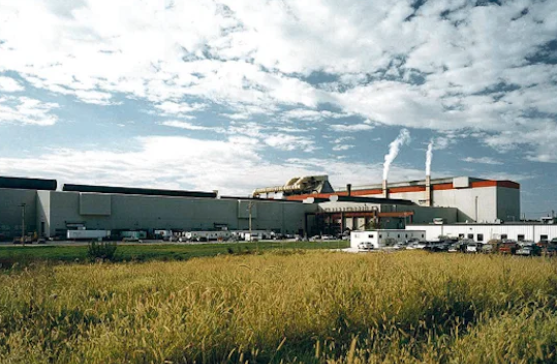The jury is still out on the long term health of the US steel industry, but one thing seems certain: if steelmaking has any prospects for success in the coming years, it will be on the coattails of the nation’s wind energy resources. In the latest development, the US-Nordic firm SSAB has announced plans to convert its global facilities to make “fossil-free” steel, including its two plants in Iowa and Alabama. Oh, the irony!

Everybody Wants Fossil-Free Steel
Let’s take a look at that Iowa facility first. Located in Montpelier, Iowa, it has been recycling steel scrap since 1997.
The Montpelier plant currently takes in about 1.4 million tons of scrap yearly and churns out new steel coil and plate for heavy machinery, ships, wind towers, and rail cars, among other end uses, along with other tasks in the metallurgical field
If you caught that thing about wind towers, that’s significant. In a press release announcing the new fossil-free plans, SSAB makes it clear that leading steel users — including wind energy developers — are looking to decarbonize their supply chains:
“…Our customers, end users and OEMs are excited to collaborate with us to enable them to be the first in their respective sectors to use SSAB fossil-free steel in their products. Ultimately, our goal is to create a completely fossil-free value chain, from the raw materials and through to the end products.”
Wind Energy & Fossil Free Steel
SSAB already has a head start on the fossil-free track in Iowa, where a copious amount of wind energy is available to power the electric-arc furnace that forms the heart of the steel recycling process.
According to the company, the Iowa facility will run on 100% renewable energy by 2022, which will come primarily from wind farms under the purview of MidAmerican Energy.
The Alabama facility is going to be a tougher nut to crack. Part of the problem is the state’s location in the southeastern region of the US, where onshore wind resources are less than optimal. Although some states in the region could tap into their offshore resources, Alabama is largely boxed out of the Gulf of Mexico by the Florida panhandle.
The US Department of Energy is pitching taller wind turbine towers as a way to harvest more onshore wind energy in the southeast, but that could be years away, more or less. In the meantime, at last count there were exactly zero wind turbines of any consequence in the entire state.
Another part of the challenge is political. Despite its relatively strong solar resources, the state ranks a lowly 26th in installed solar capacity.
Wind Energy & Real Fossil-Free Steel?
On the bright side, Alabama is the second-largest producer of hydropower in any state east of the Rockies, which means that renewable electricity could still be in play regardless of the wind and solar lag.
CleanTechnica is reaching out to SSAB for more details on its plans for renewable energy in Alabama, so stay tuned for more on that.
In the meantime, the big question for wind developers and other companies looking to decarbonize their supply chains is what to do about decarbonizing virgin steel.
SSAB has an answer for that, too. The company has partnered with LKAB and Vattenfall in a steelmaking project in Sweden that replaces coking coal with hydrogen.
Considering the involvement of Vattenfall, presumably that means leveraging wind energy to produce renewable hydrogen from water, through electrolysis.
Pre-feasibility studies for the so-named HYBRIT project find that costs for fossil-free steel are higher now, but a more competitive environment is in sight as the cost of renewable energy continues to drop and carbon penalties kick in.
That brings us back around to the Iowa wind energy angle.
Here in the US, the Energy Department is also pursuing renewable hydrogen hand over fist. The agency’s National Renewable Energy Laboratory signed a hydrogen research agreement back in 2006 with Xcel Energy to explore the interplay between wind energy and renewable hydrogen production.
Not much has happened since then in terms of shovel-ready, utility-scale renewable hydrogen projects, but that could change soon. The state of Maine is taking a look at the wind power-to-hydrogen option as a means of tapping into more wind energy without overload its overburdened grid, and it’s a safe bet that wind-rich Midwestern states like Iowa are thinking along the same lines.
The Wind Energy Irony, It Burns
As for the irony of the whole situation, that’s pretty clear. President* Trump rolled into office with a pledge to rebuild the US steel industry, but he has also made clear that he is not a fan of clean power.
The Commander-in-Chief’s antipathy toward wind turbines is particularly well known, possibly related to a bad experience with wind turbines in Scotland.
Well, the Scotland wind turbine kerfuffle could be water under the bridge if it turns out that wind energy and other renewables come to the rescue of the US steel industry.
Considering the user demand for green steel cited by SSAB, that’s the likely scenario.
Meanwhile, conventional steelmaking is still in a shaky position on these shores, despite protective trade measures promoted by Trump. Just before the Christmas holiday, U.S. Steel announced that will put two of its Michigan iron and steel works in mothballs by next April.